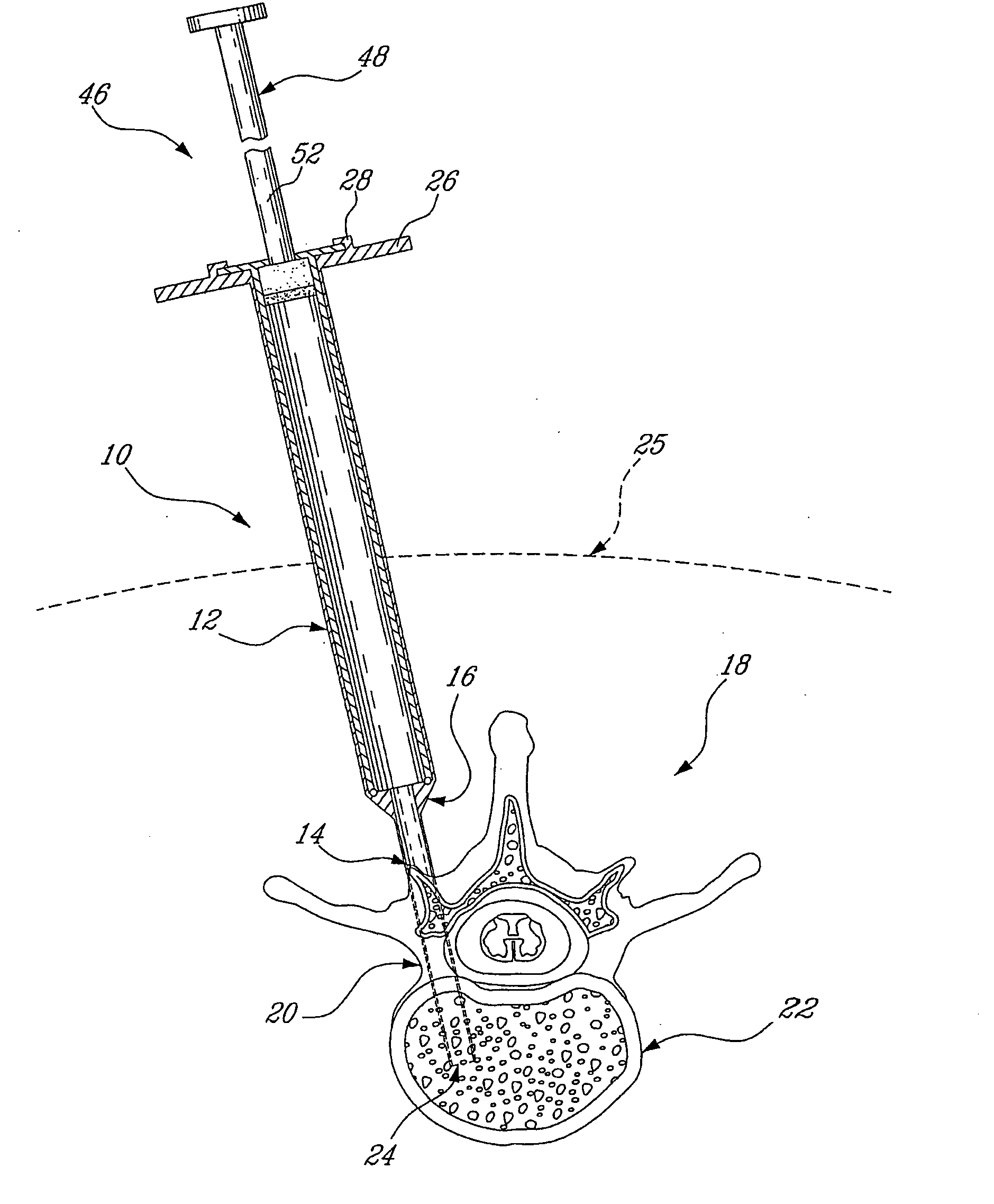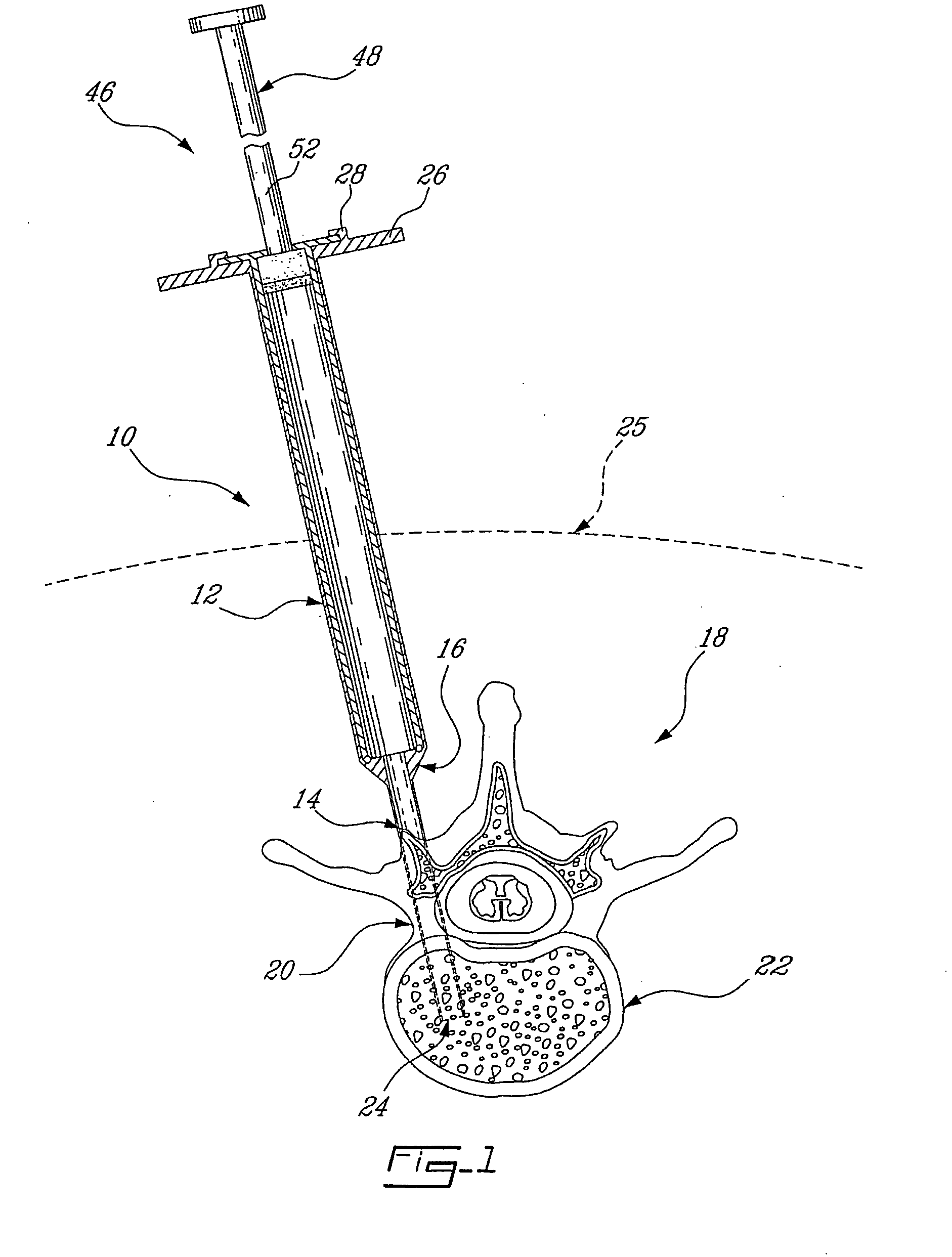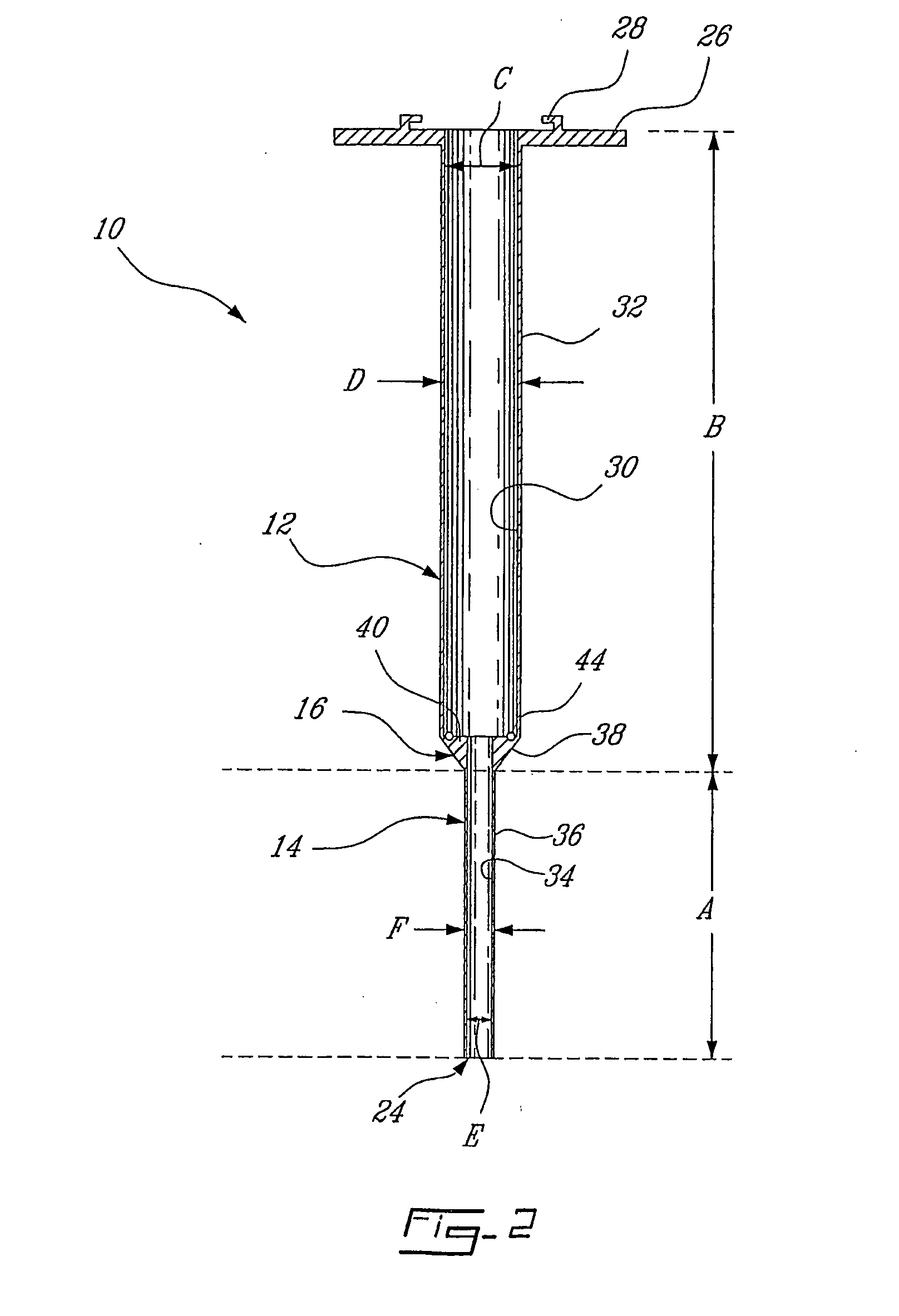Device for injecting a viscous material into a hard tissue
a technology of viscous material and hard tissue, applied in the field of injection biomechanics, can solve the problems of loss of density and strength of the trabecular bone, increased risk of so-called fragility fracture, and increased risk of neurological deficit or damage, and achieve the effect of high viscosity
- Summary
- Abstract
- Description
- Claims
- Application Information
AI Technical Summary
Benefits of technology
Problems solved by technology
Method used
Image
Examples
experiment a
Method
[0056] Three different elongated tubular members were tested. A first tubular member was a traditional single stage inner diameter 8 gauge cannula (inner diameter of 3.125 mm, length of 120 mm). Second and third tubular members were designed according to the present invention having a staged inner diameter as shown in FIG. 1. Thus, the distal end defining the cannula having an inner diameter E equal to the inner diameter of the 8-gauge cannula, i.e. 3.125 mm. The syringe chamber 12 having a length B of 80 mm and a cannula 14 length A of 40 mm. The second tubular member featured a syringe chamber 12 inner diameter C of approximately 6.35 mm for a relative increase of about 2 or 200% compared to the inner diameter E of the cannula thereof. The third tubular member featured a syringe chamber inner diameter C of approximately 9.525 mm for a relative increase of approximately 3 or 300% compared to the inner diameter E of the cannula thereof.
[0057] A thick-viscous silicone oil of...
PUM
 Login to View More
Login to View More Abstract
Description
Claims
Application Information
 Login to View More
Login to View More - R&D
- Intellectual Property
- Life Sciences
- Materials
- Tech Scout
- Unparalleled Data Quality
- Higher Quality Content
- 60% Fewer Hallucinations
Browse by: Latest US Patents, China's latest patents, Technical Efficacy Thesaurus, Application Domain, Technology Topic, Popular Technical Reports.
© 2025 PatSnap. All rights reserved.Legal|Privacy policy|Modern Slavery Act Transparency Statement|Sitemap|About US| Contact US: help@patsnap.com



